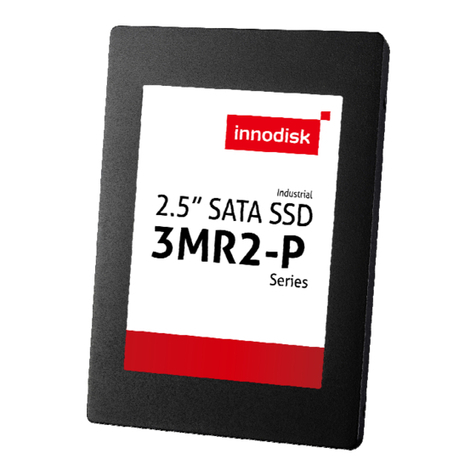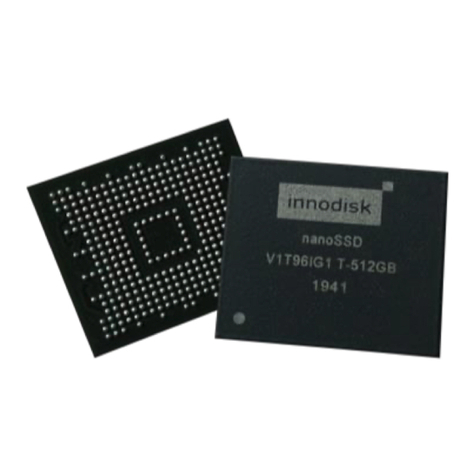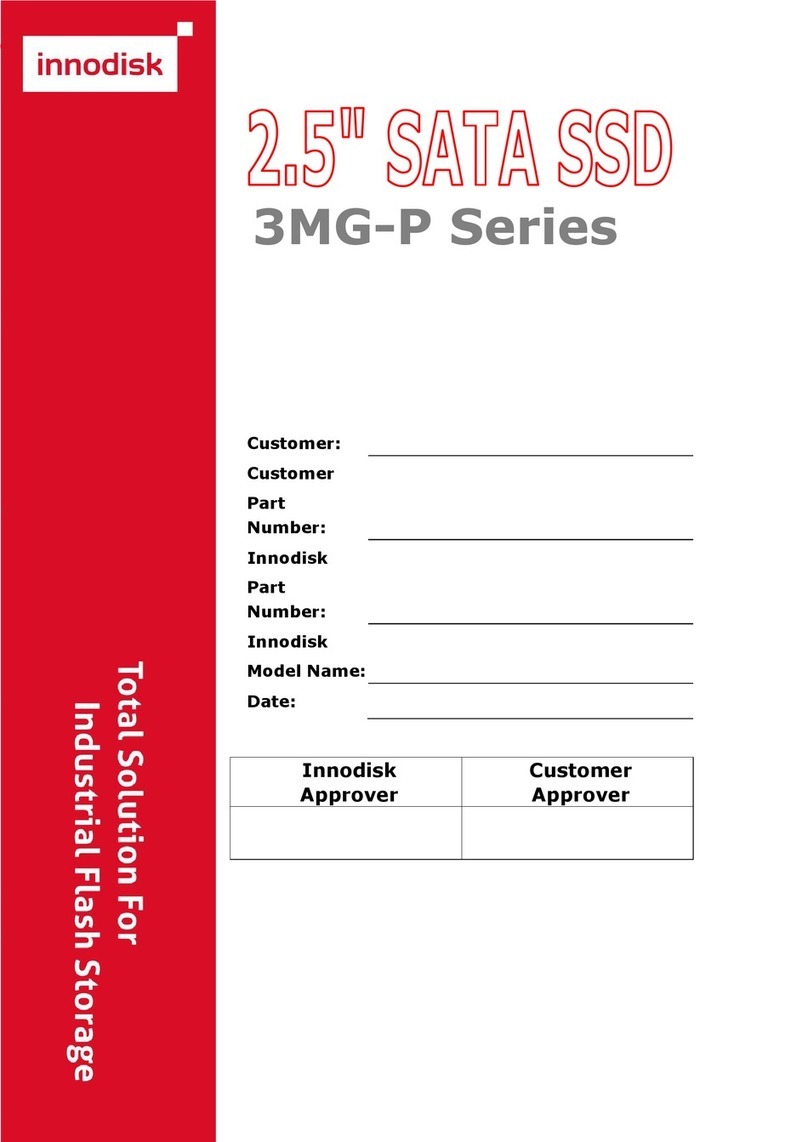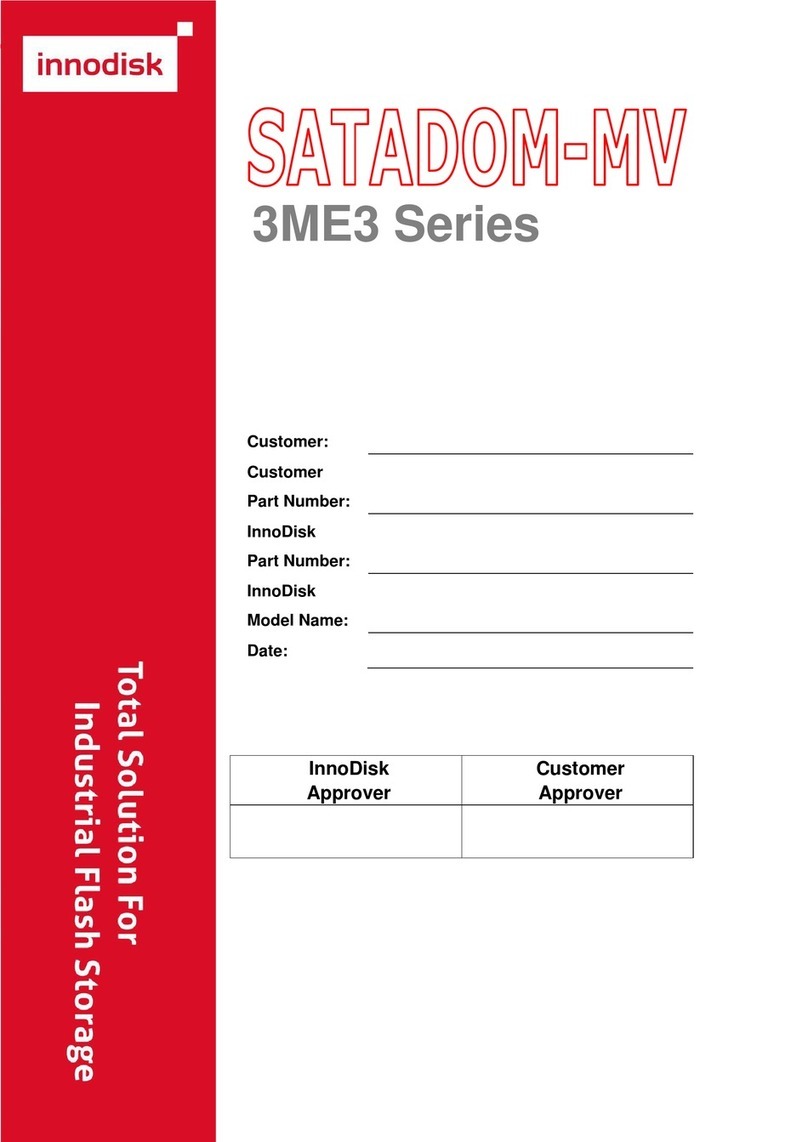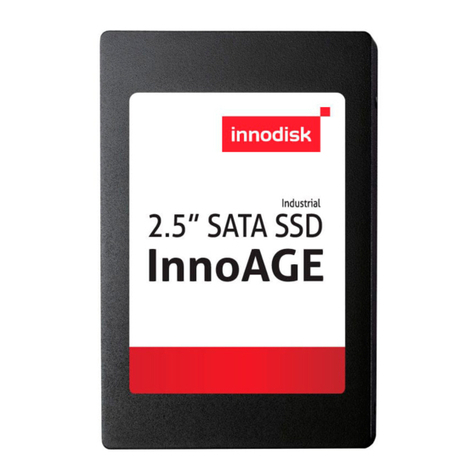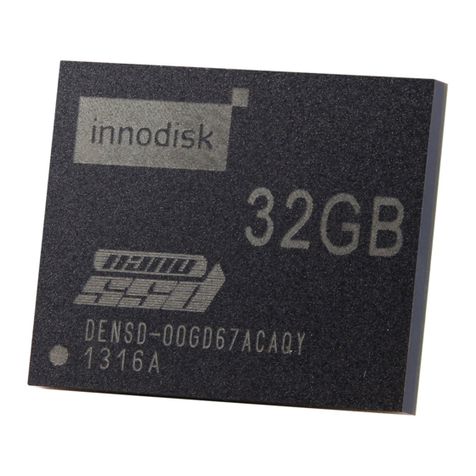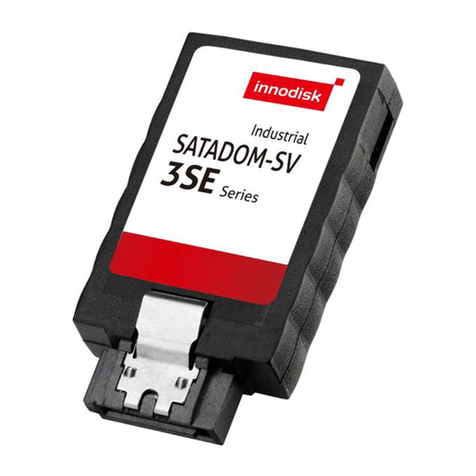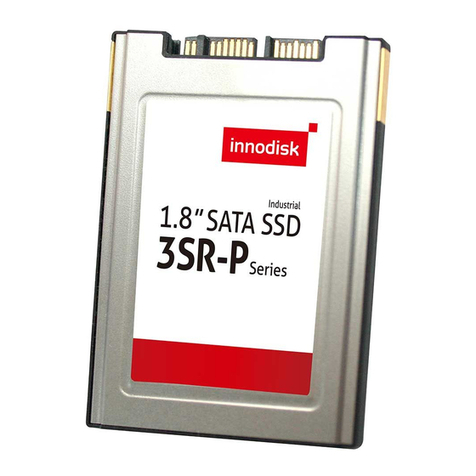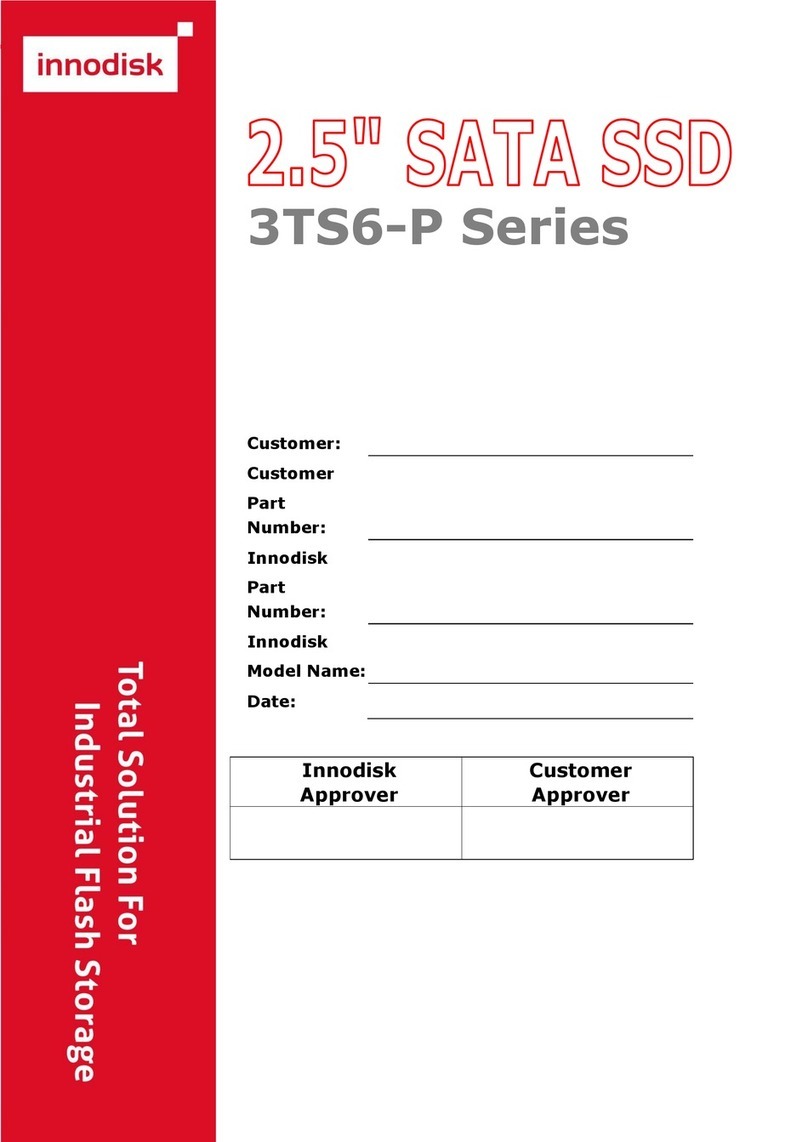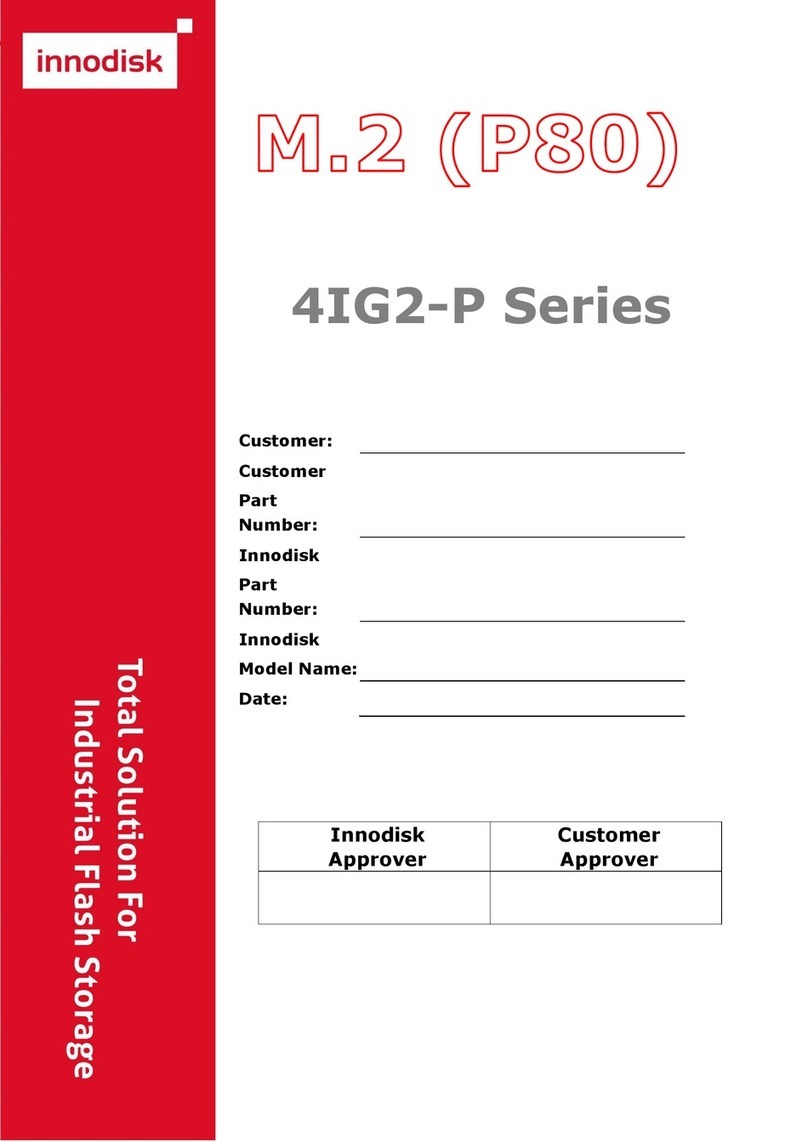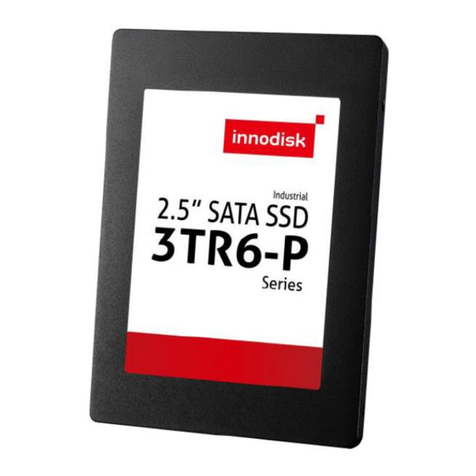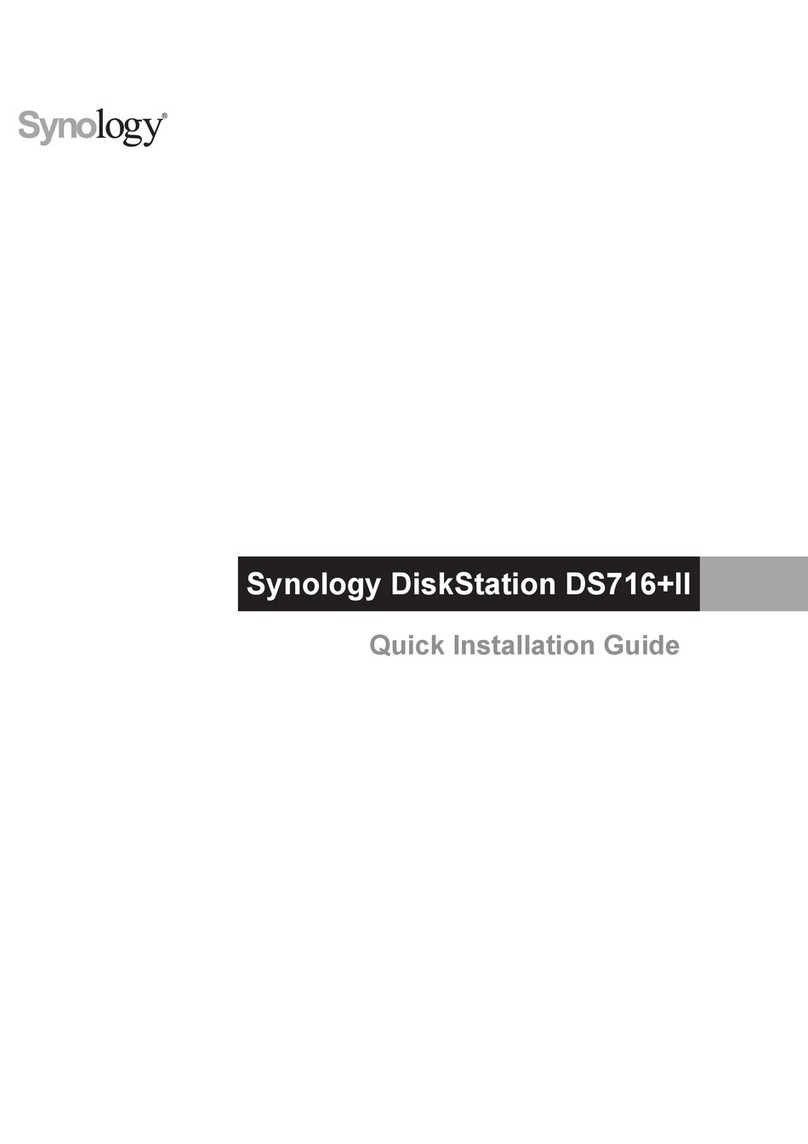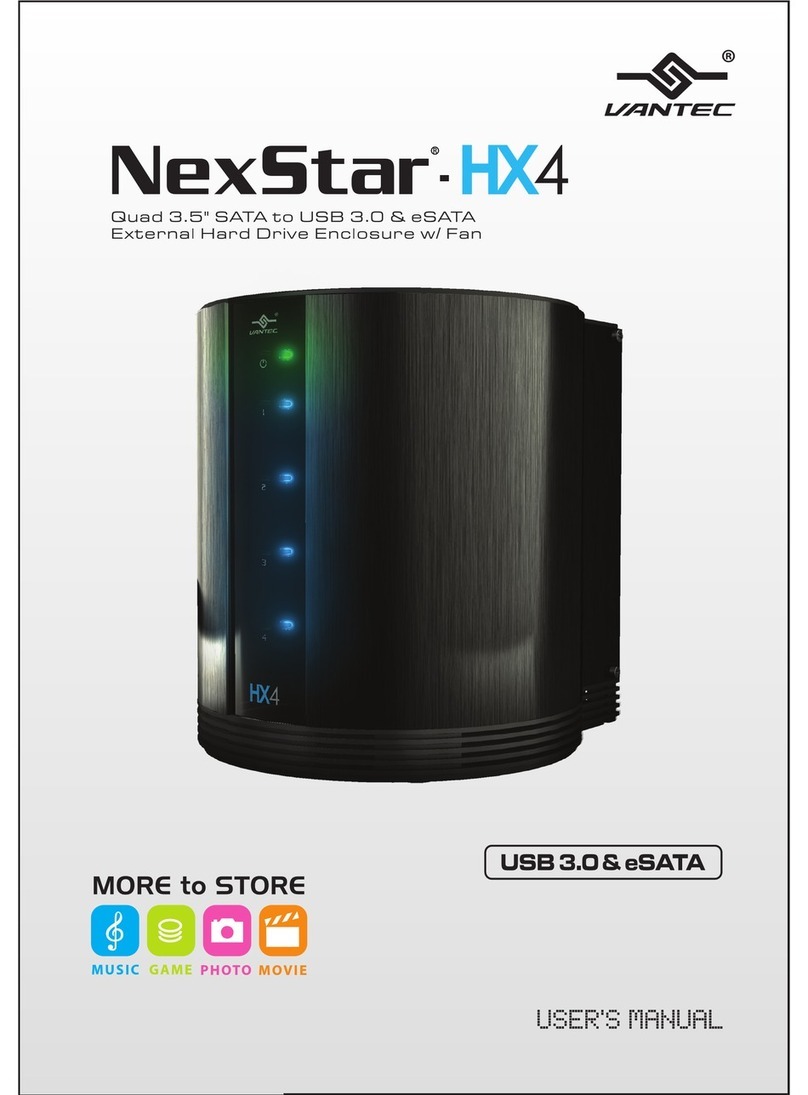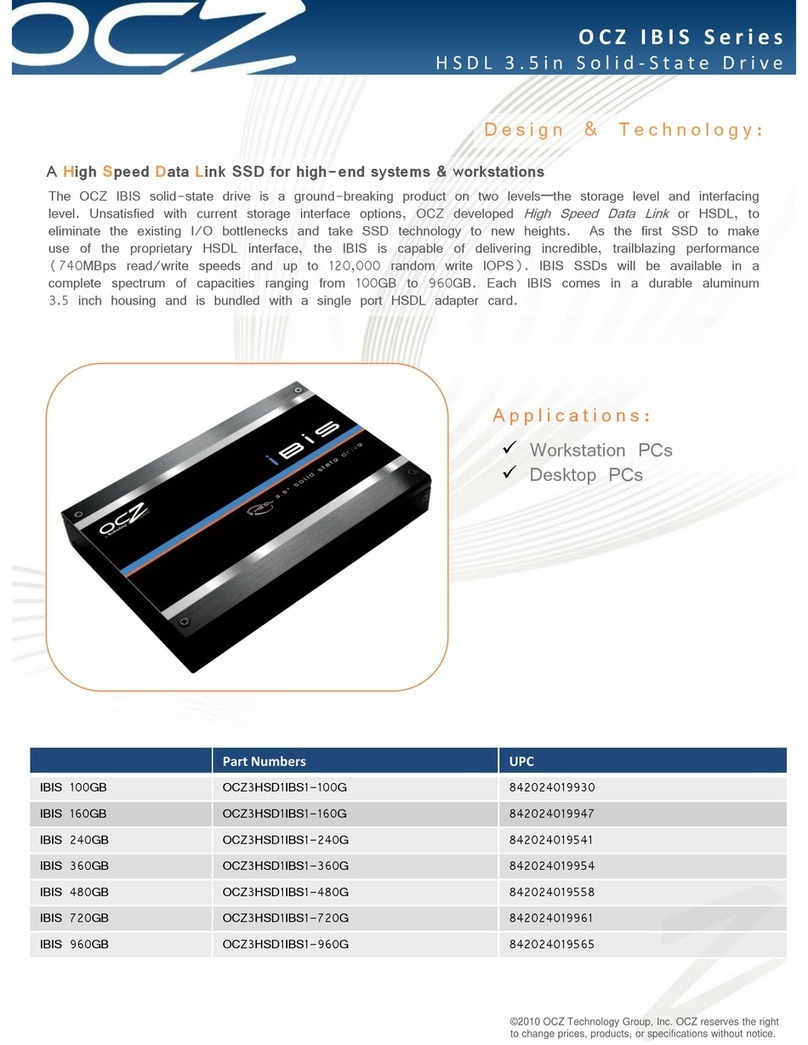
2.5” SATA SSD 3SE-P
2Rev 1.6 TPS, Jul., 2015
Table of contents
LIST OF FIGURES ........................................................................................................ 6
1. PRODUCT OVERVIEW .............................................................................................. 7
1.1 INTRODUCTION OF INNODISK 2.5” SATA SSD 3SE-P .................................................. 7
1.2 PRODUCT VIEW AND MODELS .................................................................................... 7
1.3 SATA INTERFACE ................................................................................................... 8
1.4 2.5-INCH FORM FACTOR .......................................................................................... 8
2. PRODUCT SPECIFICATIONS..................................................................................... 9
2.1 CAPACITY AND DEVICE PARAMETERS........................................................................... 9
2.2 PERFORMANCE ....................................................................................................... 9
2.3 ELECTRICAL SPECIFICATIONS .................................................................................... 9
2.3.1 Power Requirement ..................................................................................... 9
2.3.2 Power Consumption..................................................................................... 9
2.4 ENVIRONMENTAL SPECIFICATIONS ........................................................................... 10
2.4.1 Temperature Ranges ................................................................................. 10
2.4.2 Humidity .................................................................................................... 10
2.4.3 Shock and Vibration................................................................................... 10
2.4.4 Mean Time between Failures (MTBF) ......................................................... 10
2.5 CE AND FCC COMPATIBILITY .................................................................................. 11
2.6 ROHS COMPLIANCE .............................................................................................. 11
2.7 RELIABILITY........................................................................................................ 11
2.8 TRANSFER MODE .................................................................................................. 11
2.9 PIN ASSIGNMENT ................................................................................................. 11
2.10 MECHANICAL DIMENSIONS ................................................................................... 12
2.11 ASSEMBLY WEIGHT ............................................................................................. 12
2.12 SEEK TIME ........................................................................................................ 13
2.13 HOT PLUG ......................................................................................................... 13
2.14 NAND FLASH MEMORY ........................................................................................ 13
3. THEORY OF OPERATION ........................................................................................ 14
3.1 OVERVIEW .......................................................................................................... 14
3.2 SATA III CONTROLLER ......................................................................................... 14
3.3 ERROR DETECTION AND CORRECTION........................................................................ 15
3.4 WEAR-LEVELING .................................................................................................. 15
3.5 BAD BLOCKS MANAGEMENT..................................................................................... 15
3.6 POWER CYCLING .................................................................................................. 15
3.7 GARBAGE COLLECTION/TRIM................................................................................. 15
4. INSTALLATION REQUIREMENTS ............................................................................ 16
